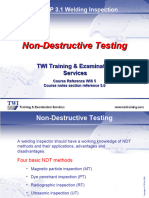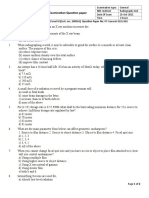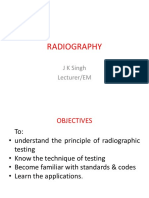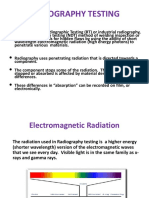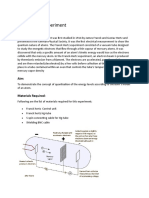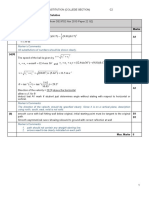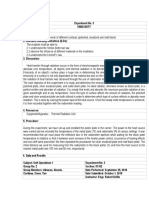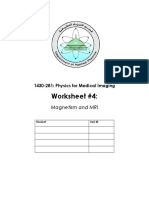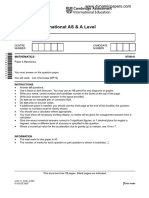0% found this document useful (0 votes)
140 views18 pagesRadiographic Testing Level 2 (RT-2) General Examination
The document outlines a series of questions and answers related to Radiographic Testing Level 2 (RT-2), covering topics such as X-ray machine settings, film artifacts, and welding discontinuities. It includes multiple-choice questions designed to assess knowledge on radiographic techniques, radiation sources, and film processing. Key concepts include the effects of kV and mA settings, the importance of film density and contrast, and the identification of various radiographic indications.
Uploaded by
apidynCopyright
© © All Rights Reserved
We take content rights seriously. If you suspect this is your content, claim it here.
Available Formats
Download as DOCX, PDF, TXT or read online on Scribd
0% found this document useful (0 votes)
140 views18 pagesRadiographic Testing Level 2 (RT-2) General Examination
The document outlines a series of questions and answers related to Radiographic Testing Level 2 (RT-2), covering topics such as X-ray machine settings, film artifacts, and welding discontinuities. It includes multiple-choice questions designed to assess knowledge on radiographic techniques, radiation sources, and film processing. Key concepts include the effects of kV and mA settings, the importance of film density and contrast, and the identification of various radiographic indications.
Uploaded by
apidynCopyright
© © All Rights Reserved
We take content rights seriously. If you suspect this is your content, claim it here.
Available Formats
Download as DOCX, PDF, TXT or read online on Scribd
/ 18



